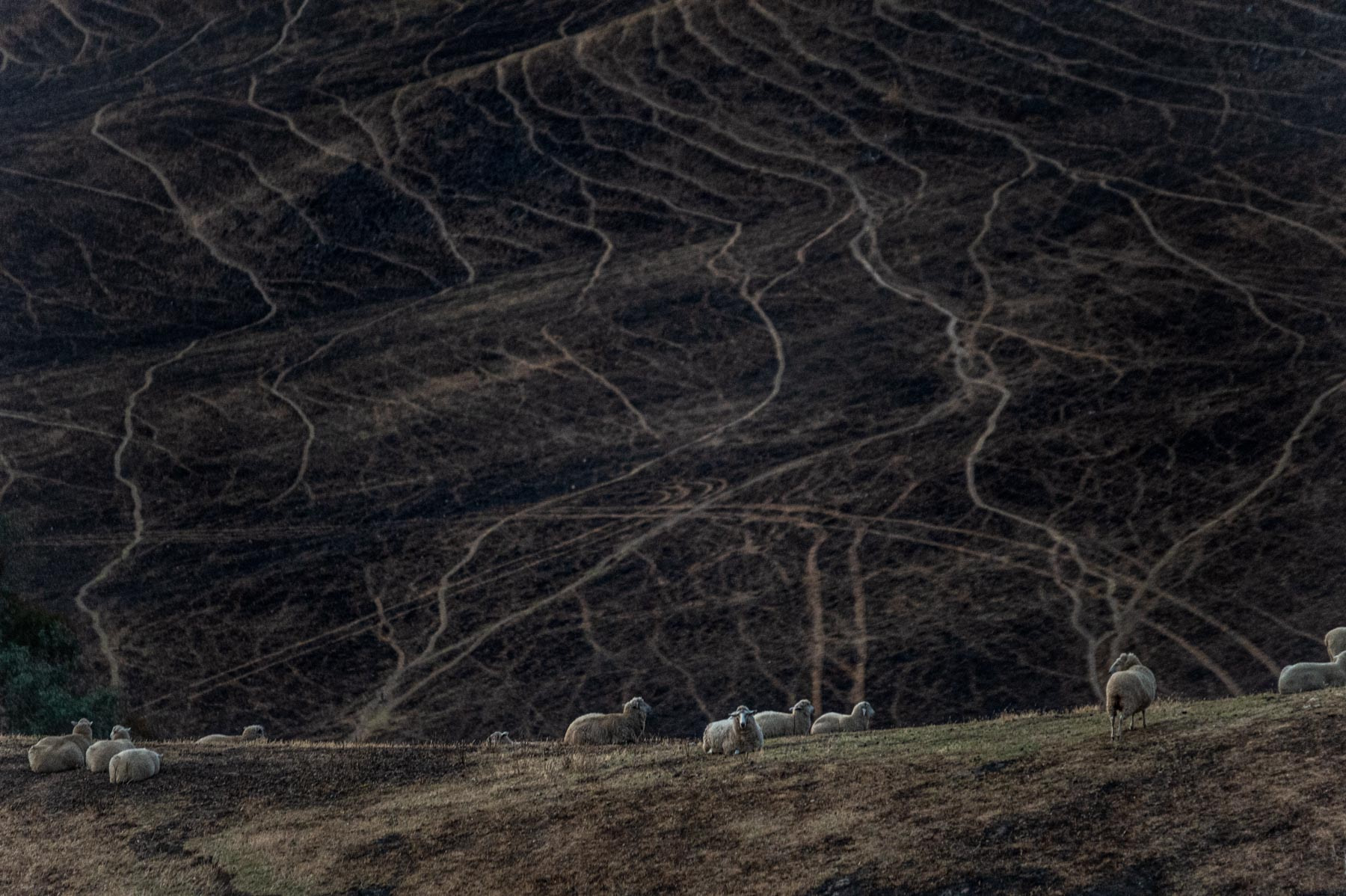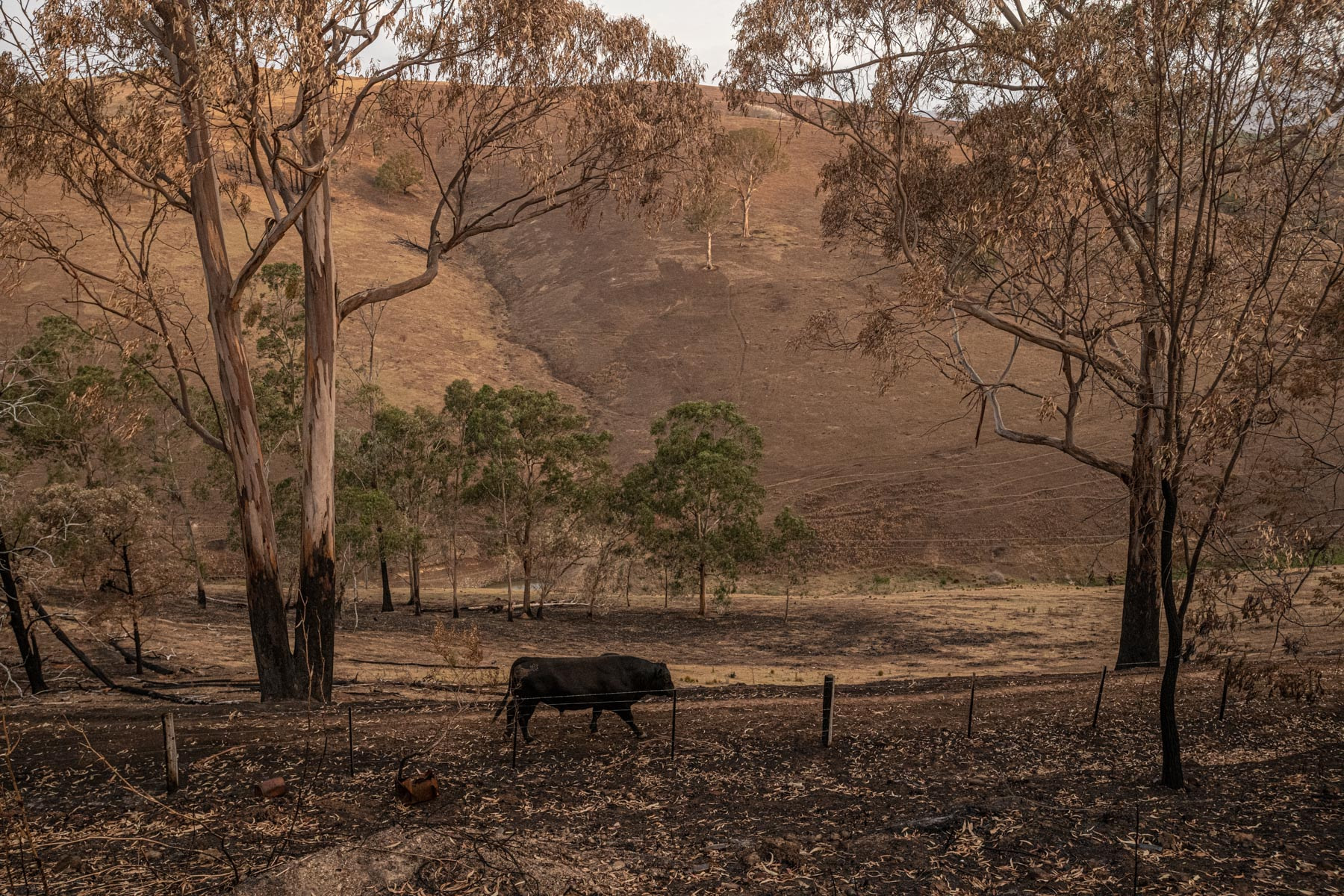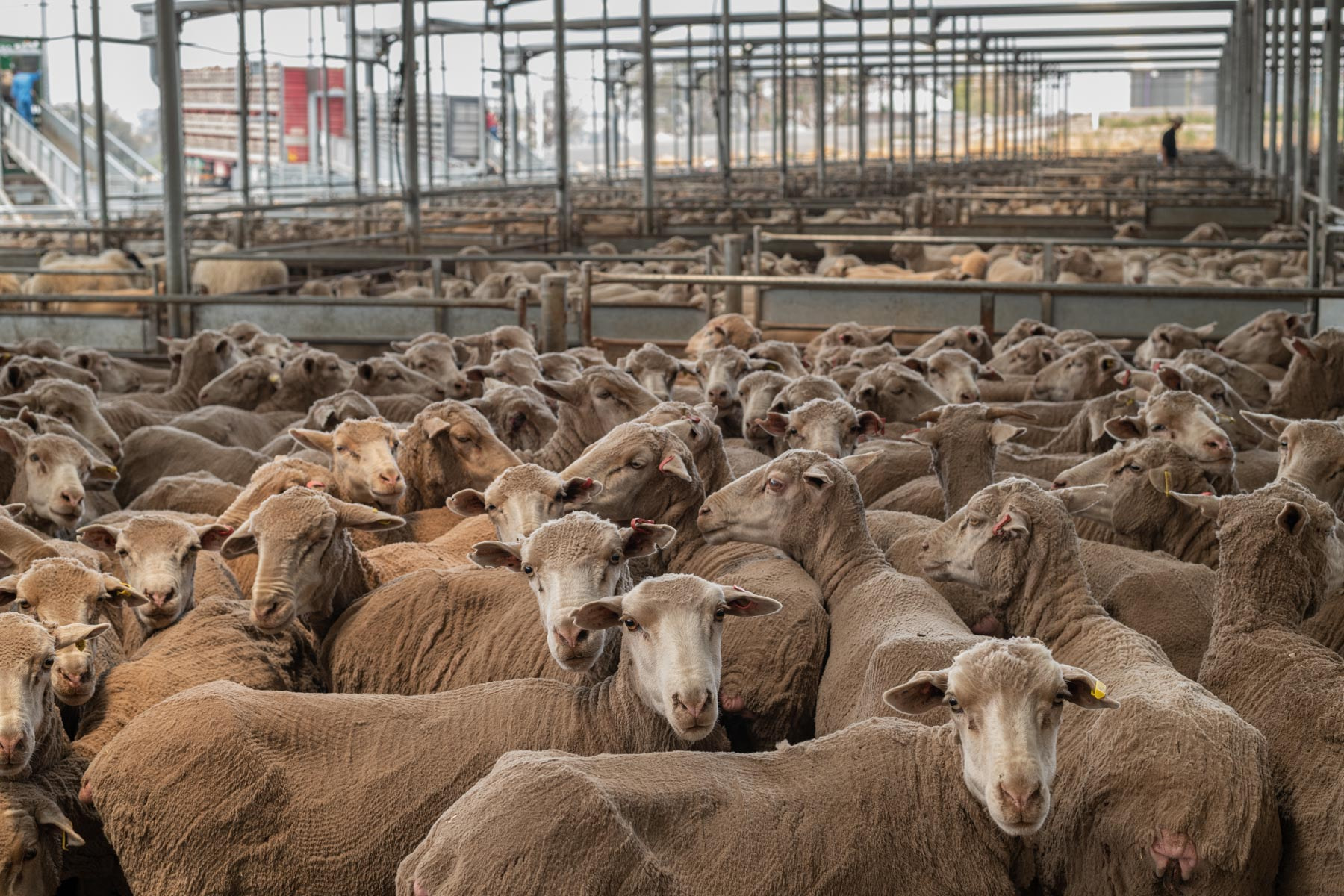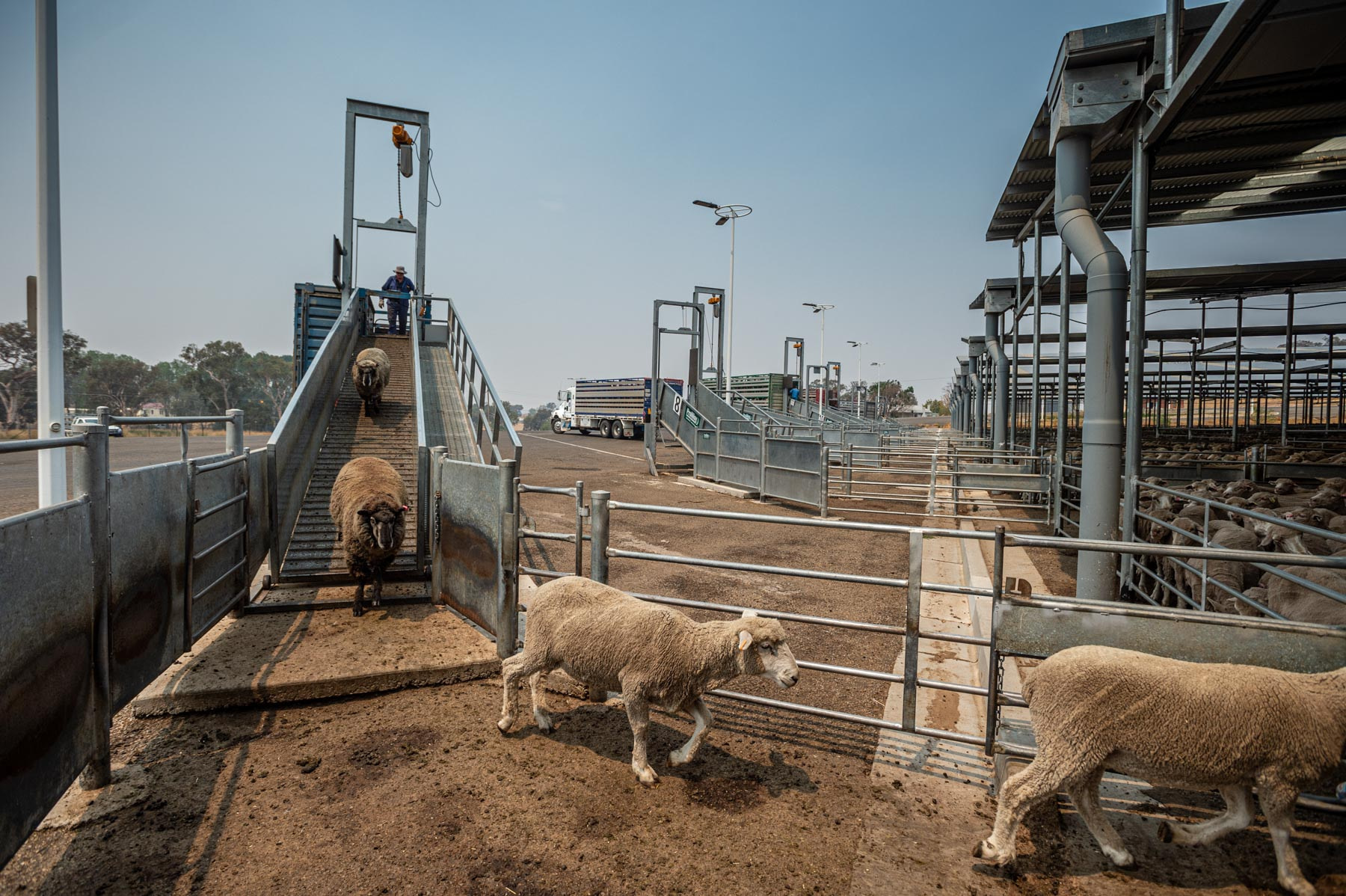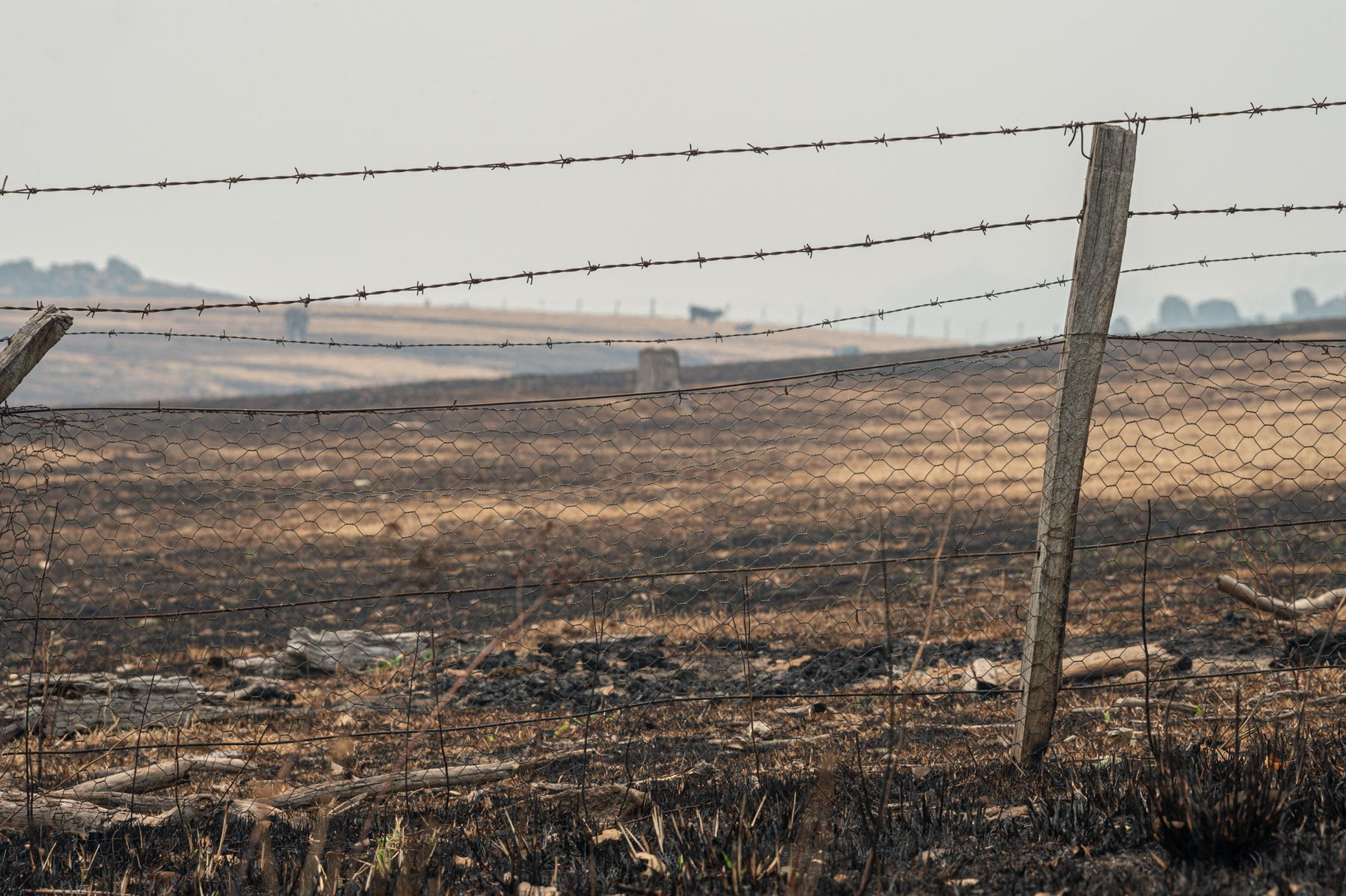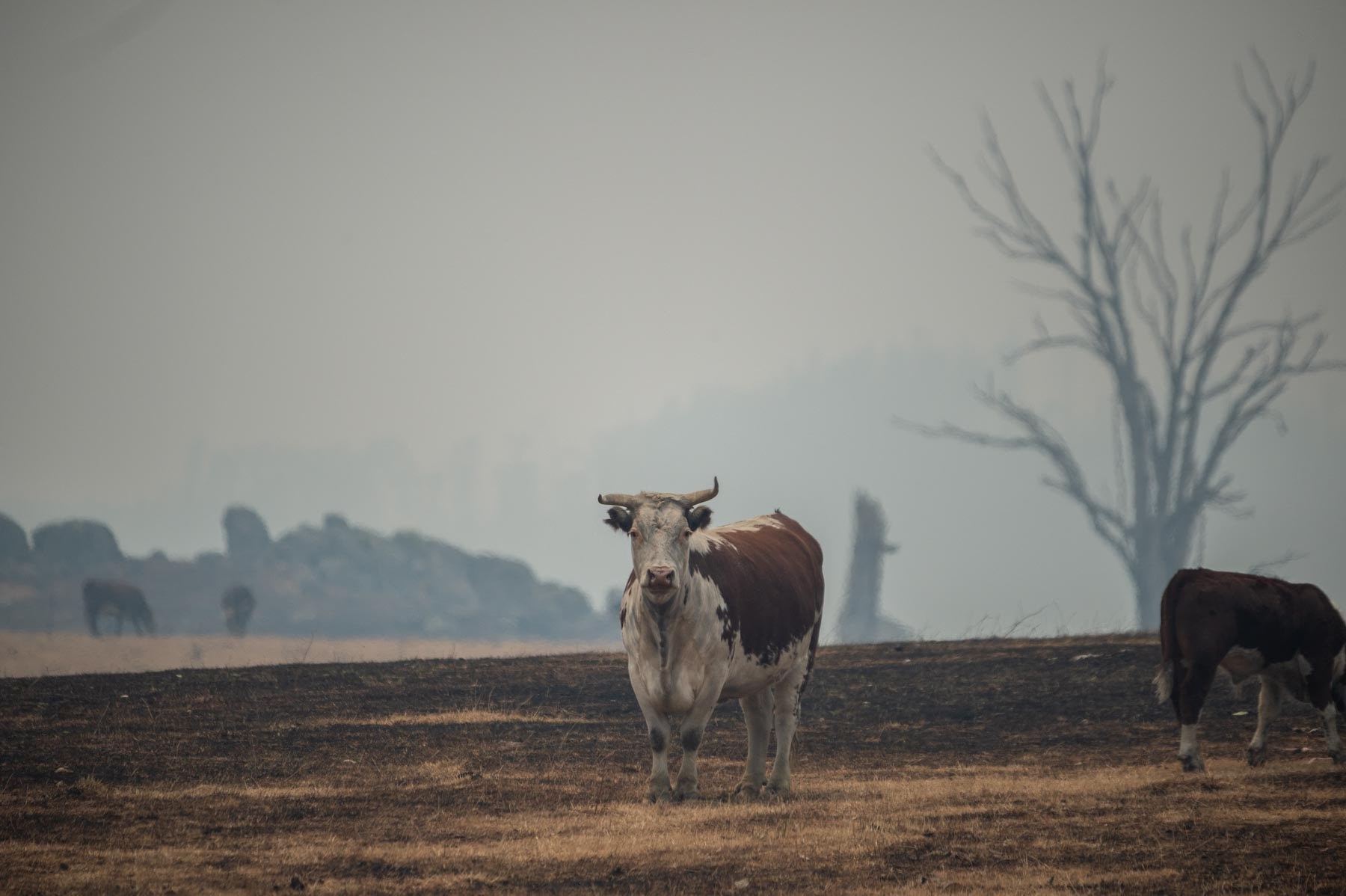Sheep graze on scorched land in the Buchan area. Buchan Area, Australia, 2020.
Jo-Anne McArthur / We Animals
[Content warning: Contains confronting images and/or video footage]
In the media coverage of the Australian bushfires, which have so far burned 10 million hectares of land, few headlines have mentioned the suffering and deaths of cows, sheep and other farmed animals.
Photographer: Jo-Anne McArthur
The New South Wales state government has confirmed 13,120 deaths, and in South Australia alone 50,000 have been confirmed dead, burned in the fires or euthanized due to their injuries. With other states yet to report, including Victoria where some of the worst fires of the season have razed whole towns to the ground, many more animals are unaccounted for and the numbers are bound to rise.
Cows grazing in the smoky landscape in the Corryong area. Corryong Area, Australia, 2020.
Jo-Anne McArthur / We Animals
At this sale yard in New South Wales sheep sales are much higher than usual because of the drought and fires. Yass, New South Wales, Australia, 2020.
Jo-Anne McArthur / We Animals
Farmers in NSW, having endured years of one of Australia’s worst droughts, have strategies for dealing with bushfire. But this season has been different. The fires have been so dense, and the heat and wind so unrelenting, that flames have migrated from forest to grasslands and sped across the dry paddocks. The last month has shown us harrowing images of cows in mass graves, bloated with smoke.
For the animals who did not die in the smoke, the grassfires have been fierce enough to burn their hooves, and their teats and penises. The heat and the stress have taken their toll – pregnant mothers suffer miscarriages.
Many have and continue to be privately sent to slaughter.
Those who remain wait in limbo for their fates to be determined. In burned paddocks there is nothing to eat, and many farmers rely on donated food, rationing out hay bales to starving animals. The road closures mean that extra food can’t reach them. Soon, they will need to sell their animals. They wait for the roads to open, and market prices to rise.
There are no donations pouring in to help care for injured farmed animals, although there are numerous crowdfunding campaigns to help farmers get back on their feet. Little interest has been taken in the horrific injuries suffered by cows and sheep, or the way in which they are sold off when the cost of their care exceeds their market value.
Cattle on dry, smoky landscapes in the Corryong area. Corryong Area, Australia, 2020.
Jo-Anne McArthur / We Animals
The bushfire crisis has also revealed our arbitrary relationship to animals based on the stories we tell about them. While we individually place food and water in our yards for displaced wildlife, injured cows are trucked to the slaughterhouse. As a society, we don’t mourn the loss of farmed animals. The momentum for their salvation is not the same as for wildlife – they are not valued simply for being who they are, but for the way they serve us. And when they cease to serve that function – when their udders stop producing, or they can no longer gain weight – we send them to the same fate we have just saved them from.






Photographer: Jo-Anne McArthur
Further reading:
More Assistance For Bushfire Affected Landholders As Stock Losses Rise NSW Department of Primary Industries
Livestock Losses On Kangaroo Island Continue To Rise PIRSA
Farmers Recount Heartbreaking Toll Of Bushfire Livestock Losses ABC News
Up to 100,000 Sheep Killed in Kangaroo Island Fires As Farmers Tally Livestock Losses The Guardian
Australia Fires: The famers burying their own cattle BBC News
Burn Scars: The Long Road to Recovery for Australia’s Wildlife Nature Picture Library
Explore and download visuals from this assignment via our stock platform and help tell these underreported stories.

